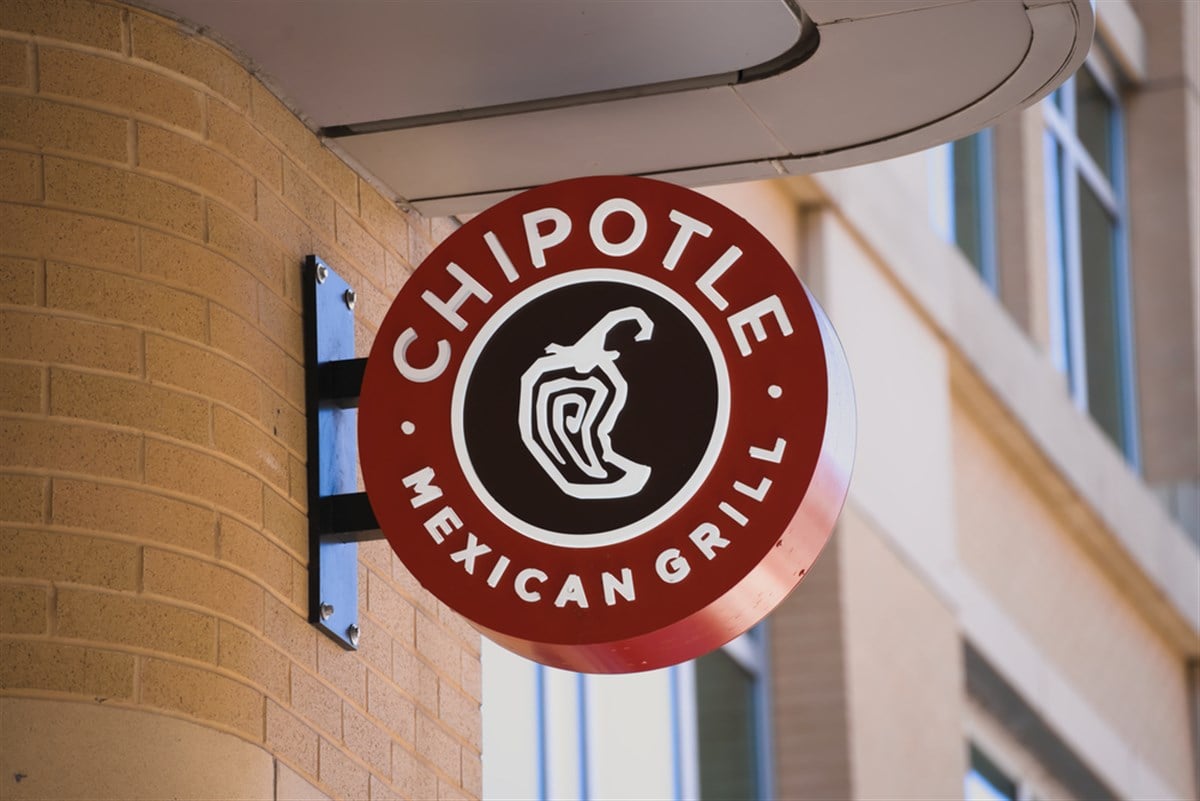
Chipotle Mexican Grill (NYSE: CMG) recently delivered a strong performance in the first quarter of 2024. Chipotle’s earnings report exceeded analysts' expectations, establishing a formidable fast-casual restaurant industry benchmark. As CAVA, Red Robin, and Cracker Barrel prepare to release their earnings reports in the coming week, investors are eager to see if these companies can succeed similarly in the volatile and often challenging restaurant sector.
Like many sectors, the restaurant industry navigates a complex macroeconomic landscape characterized by persistent inflation, fluctuating consumer confidence, and evolving dining habits. Inflation continues to impact restaurant input costs, ranging from ingredients to labor, putting pressure on profit margins. While showing signs of improvement, consumer confidence remains sensitive to economic uncertainty, influencing consumer discretionary spending, including dining out. Moreover, consumer preferences are shifting, with increased demand for convenience, value, and health-conscious options.
These macroeconomic factors create challenges and opportunities for the restaurant industry. Companies that can effectively manage costs, adapt to changing consumer preferences, and offer compelling value propositions are better positioned to thrive in this environment.
Deconstructing Chipotle's Q1 Triumph
Chipotle Mexican Grill's financial report for the first quarter earnings report exemplifies how effective strategy can drive exceptional financial performance even in a challenging economic environment. The company reported a 14.1% year-over-year increase in total revenue, reaching $2.7 billion, driven by new restaurant openings and robust comparable restaurant sales growth of 7.0%.
Notably, this growth was not solely attributed to price increases as Chipotle experienced a significant 5.4% surge in customer transactions, a clear indicator of the brand's continued appeal and ability to attract new and returning customers. This translated into an average restaurant sales figure of $3.082 million for the trailing twelve months, reflecting a healthy increase from the prior year.
Chipotle's operational efficiency also shined through in its financial results. The company achieved a restaurant-level operating margin of 27.5%, representing a 190 basis point improvement compared to the same period in the prior year. This margin expansion demonstrates Chipotle's successful navigation of inflationary pressures and vigilant management of costs while maintaining a commitment to quality ingredients and customer experience. Net income for the quarter reached $359.3 million, resulting in diluted earnings per share (EPS) of $13.01, a 23.9% increase from the previous year. These strong results underscore Chipotle's ability to generate substantial profit and deliver value to shareholders.
A closer look at Chipotle's strategic initiatives reveals a layered approach that has fueled its success. The company demonstrates a deep understanding of consumer trends and consistently translates this insight into innovative menu offerings. Chipotle's recent additions, such as Braised Beef Barbacoa and Chicken Al Pastor, exemplify this approach. These limited-time offerings have resonated with customers, driving traffic and sales growth while showcasing the company's willingness to experiment with new flavors and formats.
Additionally, Chipotle has established itself as a leader in digital innovation within the restaurant industry, having made substantial investments in its digital ordering platform and loyalty program. Digital sales now account for 36.5% of the company's total food and beverage revenue, highlighting the success of this strategic focus on convenience and customer engagement. This digital prowess, driven by a user-friendly mobile app, an intuitive website, and a compelling loyalty program, allows Chipotle to capitalize on the expanding online ordering market and foster deeper customer relationships.
Furthermore, Chipotle has demonstrated agility in navigating the current inflationary environment by implementing a well-calibrated pricing strategy that balances profitability with customer value. The company has judiciously adjusted menu prices to offset rising input costs while simultaneously pursuing cost optimization measures. This enables it to remain competitive and maintain its commitment to high-quality ingredients.
CAVA: The Up-and-Comer's Challenge
CAVA Group (NYSE: CAVA) is a fast-growing newcomer in the Mediterranean fast-casual segment. CAVA has garnered significant attention with its fresh ingredients, customizable bowls, and flavorful dips and spreads. Although CAVA’s financial performance has been strong, its guidance for the upcoming year suggests a more moderate growth trajectory.
CAVA projects comparable restaurant sales growth in the range of 3.0% to 5.0%, a notable slowdown compared to its previous performance and significantly lower than Chipotle's Q1 achievement. Additionally, CAVA anticipates a restaurant-level operating margin of 22.7% to 23.3%, trailing Chipotle's margin expansion. While CAVA's projected growth for the upcoming year falls short of Chipotle's recent achievements, the company is pursuing a clearly defined strategy to secure its position within the competitive, fast-casual landscape.
Aggressive Expansion
The company plans to open between 48 and 52 new restaurants in 2024, a rapid pace of growth aimed at capturing market share and establishing a nationwide presence. This expansion strategy, however, carries inherent risks, including potential cannibalization of existing locations and challenges in maintaining consistent quality and service across a growing footprint.
Brand Differentiation in a Crowded Space
CAVA operates in the increasingly competitive fast-casual segment, where it must differentiate itself from a growing number of players offering similar health-conscious and customizable options. The company has sought to distinguish itself by focusing on high-quality ingredients, bold flavors, and a vibrant Mediterranean-inspired atmosphere.
Menu Innovation and Customization
CAVA's menu offers a wide array of customizable bowls, salads, and pitas, allowing customers to personalize their meals with a variety of protein options, toppings, and sauces. This emphasis on customization aligns with consumer trends toward personalized dining experiences and caters to dietary restrictions and preferences.
While CAVA possesses strong growth potential, it faces the challenge of maintaining its momentum in a crowded market while navigating inflationary pressures and managing the complexities of rapid expansion. CAVA’s analyst community remains cautiously optimistic, citing the company's brand appeal and strong unit economics, but caution that execution will be critical to its long-term success.
Cracker Barrel: A Traditional Favorite Confronts Change
Cracker Barrel Old Country Store (NASDAQ: CBRL) is a long-standing fixture in the casual dining segment. Cracker Barrel is known for its homestyle comfort food, nostalgic atmosphere, and attached retail shops. The company, however, faces a more challenging path ahead. Cracker Barrel’s earnings report for the second quarter of 2024 provided evidence of this in its released guidance for the remainder of fiscal 2024.
Cracker Barrel’s financial projections anticipate a total revenue in the range of $3.5 billion to $3.6 billion, suggesting limited growth for the remaining quarters. The company has not provided explicit guidance for comparable restaurant sales, but its projections for commodity inflation of 0% to 2% and hourly wage inflation of approximately 5% point to potential margin pressure. Furthermore, Cracker Barrel anticipates a significant decline in generally accepted accounting principles (GAAP) operating income, ranging from $95 million to $105 million, highlighting the challenges it faces in maintaining profitability. In the face of current challenges, Cracker Barrel has embarked on a multifaceted strategy to overcome and mitigate its struggles.
Menu Refresh and Value Enhancement
The company is working to revitalize its menu with new offerings and updated versions of classic dishes. It is also focused on providing compelling value to customers through promotions and bundled meal options, seeking to address price sensitivity in a challenging economic climate.
Elevating the Customer Experience
Cracker Barrel recognizes the importance of providing a positive and memorable dining experience. The company is investing in initiatives to enhance customer service, improve operational efficiency, and create a more inviting and welcoming atmosphere.
Cost Management and Operational Efficiency
Faced with inflationary pressures on labor and commodity costs, Cracker Barrel is implementing cost management measures and seeking to improve operational efficiency across its restaurants. These efforts include streamlining back-of-house operations, optimizing supply chain management, and exploring technology solutions to enhance productivity.
Despite these efforts, Cracker Barrel's analysts’ outlook remains cautious, reflecting the significant headwinds facing the casual dining segment. Analysts are concerned about the company's ability to attract younger demographics, compete with fast-casual alternatives, and effectively manage cost pressures. While Cracker Barrel's brand recognition and loyal customer base remain strengths, its ability to adapt to evolving consumer preferences and overcome margin challenges will be key to its long-term performance.
Red Robin: A Turnaround Story in Progress
Red Robin (NASDAQ: RRGB) is a fast-casual dining chain specializing in gourmet burgers and a lively bar atmosphere. Red Robin has faced several years of declining sales and profitability. Red Robin’s earnings report for the fourth quarter and fiscal year of 2023 provided the company's guidance for fiscal 2024. Red Robins's guidance underscores its continued challenges, projecting a low single-digit decline in total and comparable restaurant revenue. Red Robin anticipates restaurant-level operating profit in the 12.5% to 13.5% range, lower than Chipotle and CAVA, indicating ongoing pressure on margins.
Rather than focusing on new unit growth, Red Robin is prioritizing financial health, stability, and operational improvement. The company is actively pursuing Sale-Leaseback transactions to reduce debt and strengthen its balance sheet. This strategy aims to create a solid financial foundation for future growth but also signals a more cautious approach to expansion.
Operational Excellence and Efficiency
The company is focused on improving operational efficiency across its restaurants, streamlining processes, and reducing waste. This focus on efficiency aims to improve service speed and consistency, enhance the customer experience, and control costs.
Menu Optimization and Value Proposition
Red Robin is seeking to refine its menu, focusing on core burger offerings while introducing new items to appeal to a broader range of customers. The company also emphasizes value through bundled meals and promotions to attract price-conscious consumers.
Guest Engagement and Loyalty
Red Robin is investing in initiatives to enhance guest engagement and loyalty, recognizing the importance of building lasting customer relationships. These efforts include personalized marketing campaigns, loyalty programs, and efforts to foster a welcoming and inclusive atmosphere.
Red Robin's path to recovery will likely be a multi-year journey, requiring sustained focus on operational execution, menu innovation, and customer engagement. Red Robin’s analyst community acknowledges the company's efforts to stabilize its business. Still, it remains cautious about its ability to regain lost market share and achieve sustainable profitability in a competitive environment.
Investing as the Restaurant Sector Evolves
The restaurant sector stands at a crossroads, shaped by macroeconomic forces and evolving consumer preferences. Chipotle's success is a testament to the power of innovation, operational excellence, and a strong connection with customers. However, the diverging paths of CAVA, Cracker Barrel, and Red Robin highlight the challenges many restaurant chains face in adapting to this changing landscape.
For investors, these companies present a spectrum of risk and reward profiles. With its strong growth trajectory and brand appeal, CAVA offers an opportunity to capitalize on the expanding fast-casual market. Still, its ability to execute its ambitious expansion plans and maintain its differentiation will be crucial. Cracker Barrel, a traditional favorite, faces the challenge of revitalizing its brand, attracting a younger demographic, and navigating cost pressures. Red Robin, embarking on a turnaround journey, must demonstrate its ability to improve operational efficiency, enhance its value proposition, and rebuild customer loyalty.
As the restaurant industry evolves, investors must carefully evaluate each company's unique circumstances, strategic direction, and ability to navigate a complex and competitive environment. Next week's earnings reports will provide valuable insights into whether these companies are on track to achieve their goals and deliver long-term value for shareholders.





